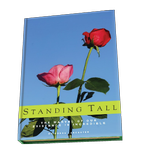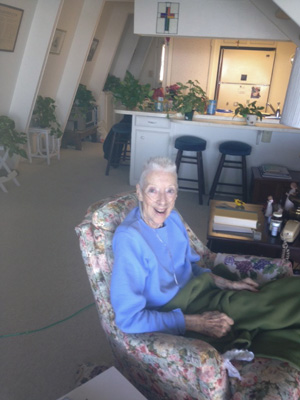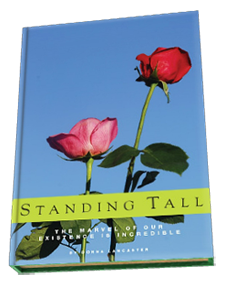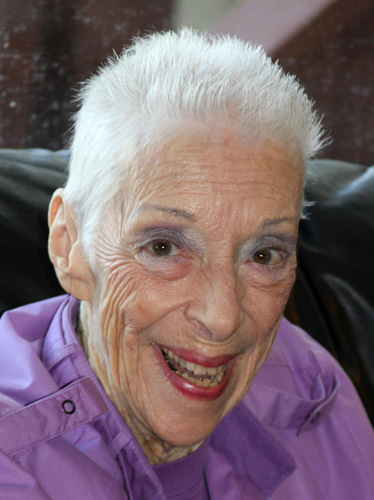ALONG THE WAY:
“What is” has value when one is awake and sees it.
THIS MONTH’S THOUGHT:
Being uncomfortable is a signal that one is struggling toward an illusion.
SCIENCE OF MAN: Lesson 11
Two frequent ideas used in the Teaching is that of “What is”. “What is” is whatever one sees as fact. And the other idea that is frequently used is “What ought to be”, or the ideal. This is what one sees as good. Now frequently one sees some fact and decides that it is not good, that it has no value. And of course there begins then the struggle to change “what is” into something that one would see as good, or ideal, or what ought to be. And of course this is conflict, struggle and resistance. Now the Teaching says that “what is” has a value. Now to be able to see that value one might see that the self has many ideals, or many ideas of “what ought to be”, or many ideas of what is good or valuable. And that unless these two, “what is” and “value” are seen in the same light, one has not seen truth. Now a fact is not what is referred to as Truth. It is a true state of affairs. It may be true what one sees, but is not considered Truth, with a capitol “T”. Truth, with a capitol “T” means that one sees “What is” and sees the “Value” of what is. And that, of course, is the ending of conflict, struggle, and resistance. Because when one sees what is and sees the value of it, X acts upon that. But as long as one sees what is, something as being a fact and the self suggests that that is not good, that that what is ought to be something else, then comes the struggle, the conflict, and the resistance.
Now, suppose that we begin today to write down two sheets of paper. One is headed “What is”. And the other one is headed “What ought to be”. Now we will see many things today that is what is: facts. But we do not see that fact as having any value. We might see it as having a very negative value, a minus. It is something as being bad. Then we will see that the self begins to work as to what that “what is” ought to be. Now, let’s write down, under the “what ought to be’s, what we would consider to be good. In other words, what ought to be’s are considered to be illusions of what was good. And we haven’t seen the good of “what is”. A child in school is given an assignment. And he doesn’t want to do the assignment. Now he knows what is, he’s given an assignment. But, he doesn’t see it as good. So he will procrastinate, he will fret, he will complain, he will make all manners of noise, he’ll say it’s impossible, that the teacher is an ole meanie for having given him the assignment. Another child may see the assignment as being very worthwhile, of having value in becoming proficient in whatever the subject the assignment concerned. And he will find interest in doing the assignment. And very quickly the assignment is done. He has a great sense of satisfaction. X operated upon the assignment because it was seen, of course, as what is, which both agree on. It’s very difficult to argue with a fact. But it is very easy to contend as to the value of that fact. And, thereby, come to Truth.
Now, under the “What ought to be’s” and the “What should be’s” we’re going to write many of the things that we feel would be good. Now, the first thing we probably would feel would be good, “That I would always be comfortable”. The fact is, the what is, possibly, one is not comfortable. Now, that has a value because that being uncomfortable is a signal that one is struggling toward an illusion. That one is in some form of stress. Now, there’s four possible ways of being in stress. One of course is from the environment. That there are sudden changes in temperature. That there are jolts, jars and falls. That there is toxicity in the air or what have you. Or that various products in the environment, various substances are toxic when taken into the body. If one is in a state of discomfort, it is telling one that one is in one form of stress. And one can then look for which form it is from the environment. The other one would be from the inner feeling which accounts for about 97% of the stress. The other one would be improper nutrition. One isn’t eating and providing the fuel or seeing as good the fuel that is required for the body. And the other one would be unusual activity: seeing as desirable some sudden stressful activity. Like if you’ve been sitting at a desk for many months and suddenly go out and go skiing, or mountain climbing, or try to run a race with someone, a hundred yard dash. One would find that this would bring about some sort of ache, pain or misery. However we have been conditioned. The self sees all discomfort as something bad and does not see it as of a value. And begins to look for some way to achieve the ideal of what ought to be. So it uses drugs or many other methods to make one insensible so that one no longer receives the signal. One is only interested in what one sees as good.
Now in beginning to observe the self, I observes the self, one of the more valuable areas is to see what the self has considered to be good. We have seen that it considers to be good – to be totally non-disturbed physically. That it is seen to be good to have attention. Now one can gain attention by driving down the street at an excessive rate of speed. One can gain attention by doing unusual thing, such as standing on the corner and eating a piece of coal. One will gain attention. One can gain approval from certain people by agreeing with them, which may or may not be to ones advantage. One can gain approval by acts of daring, by performing very unusual feats, or by attempting to do them, to show that one is not chicken. That one is brave. And sometimes, we see people do very foolhardy actions by trying to gain attention, by trying to gain approval. One may feel important by lording it over other people, by gaining some means of control over others, either by suggestion, or by force, or by threats, or by withholding or giving of certain values that the one receiving sees. As one observes this, one sees that there are many unusual values placed. And that in order to be conscious and to live on a different state of being, that what one has held out as being good, what one has accepted as being valuable, or good, is possibly one of the greatest areas of confusion. When one sees something as true, but some other state as being of value, there’s conflict, there’s struggle, there is resistance, which is the dis-integrating factor, the struggle toward an illusion…. an illusion that what is can be changed to fitting what the self has agreed is valuable or good. Now, very little effort is spent on seeing if what is is good on an entirely different viewpoint if one looks at it different. We have suggested that there are four possible forces in the world. Initiative: something I do. Something one wants to originate. And then there is resistance always against that, whether it be gravity, whether it be distance, whether it be weather, whether it be someone, whether it is a given event. So, second force comes along to obstruct in some way, resist what the origination was. But, without this second force there would be no strength, no power. It is the same as if you tried to mold a ceramic dish without a mold of resistance to pour the liquid ceramic in so it could harden into the shape one wanted. Then, one would have a form. So, with initiative and resistance comes about a form. And then the form provides a use. So, we have four forces: initiative, resistance (which may be either active or passive), then the form, and then the result. Now most of us see all second forces as something frustrating, something that interfered with the ideal of things being like I wanted them to be, like they ought to be, like they should be. And, of course, second force is seen as misfortune, as evil, as something bad, as bad luck and of course, the person resists that second force and thinks it ought to be without it. And, of course, this is one of the things that brings about the idea of what ought to be, the ideal. (To be continued next month.
A STORY:
The national and international interest in this election has been fascinating. I did feel that there may have been a teeny-tiny tweak in consciousness for 60 million Americans to vote for a black man. I found that very exciting.
For many years I have carried the banner: “Keep the mood up!” It seems to me that the status of our planet is affected by the energy radiated by all of us, regardless or whether it is up-lifting or destructive. And as we all know there is a tremendous amount of negativity out there.
When my purpose is to contribute to a harmonious mood wherever I go, I am the one who profits most from this intent. I cannot check out or prove that this mood could have an unspoken influence. However what do I have to lose?
So how do I do this? I fully realize that I am 100% subject to suggestion 100% of the time. And suggestions are rampant; many of them are fear based. Many statements are only opinions that may or may not be true. Anything that incites fear is toxic and poison to me when I am asleep and buy into it.
I have an assignment: Keep the mood up. I will give it my very best shot!
AWAKENING QUESTIONS:
Dr. Bob Gibson from the Science of Man Teachers Course #1 page 66.
- What am I?
- What’s happened to me?
- Where am I and what is the purpose of being here?
- How have I been seeing life?
- Whose estate is this?
- Who owns everything here?
- What’s going on here?
- What have I believed was going on here?
- What have I been doing?
- What can I do now?
- Who can I do anything for?
- Do I feel required to, or do I have the privilege of doing something for the Host?
My kind of doctor:
Q: I’ve heard that cardiovascular exercise can prolong life. Is this true?
A: Your heart is only good for so many beats, and that’s it…don’t waste them on exercise. Everything wears out eventually. Speeding up your heart will not make you live longer; that’s like saying you can extend the life of your car by driving it faster. Want to live longer? Take a nap.



